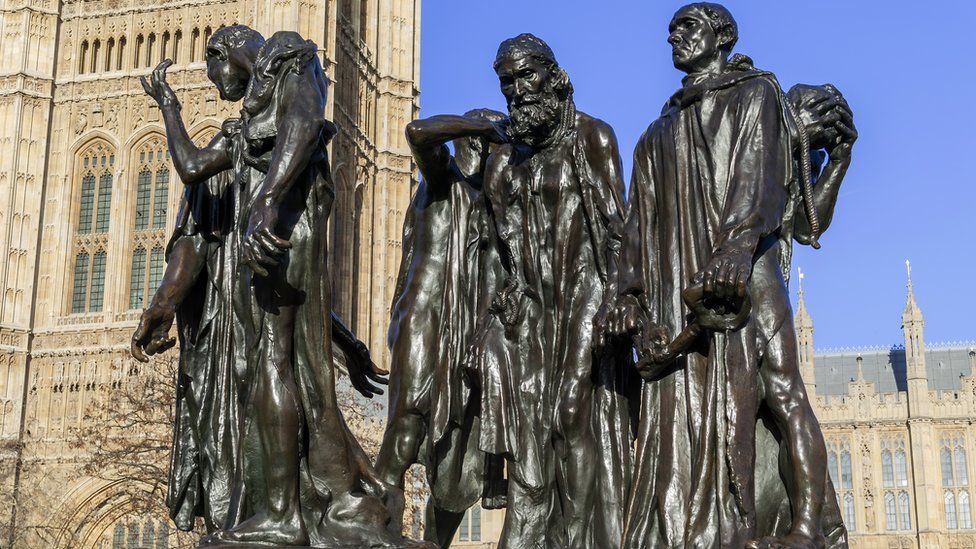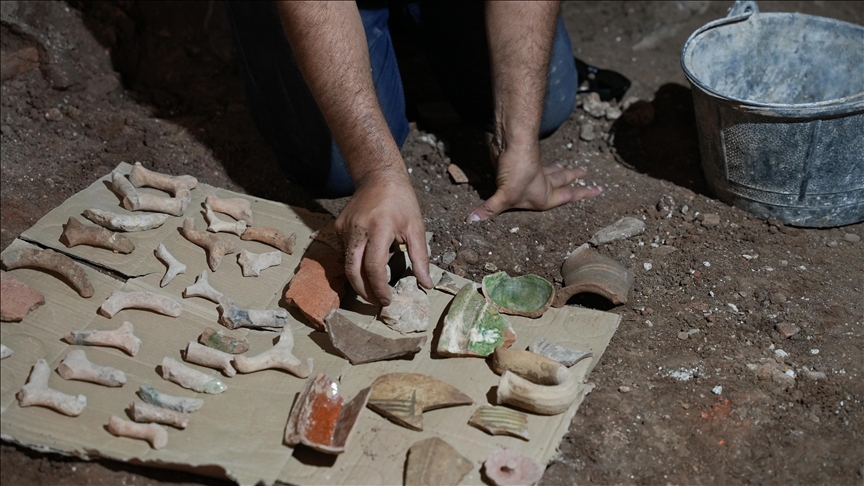A 3,000-year-old necropolis has been unearthed during the excavations carried out in the Cehennem Deresi (Hell Creek), which is located in Batman.
Hasankeyf Museum Directorate officials found the necropolis by chance when they visited the area to register some caves with paintings.
The necropolis is built on steep cliffs overlooking the Tigris River, which the teams reached by walking for approximately five kilometers accompanied by security guards.
In the first stage, archaeologists opened eight trenches and found a necropolis with nearly 150 urn graves, rock tombs and earthen graves, which were determined to belong to the Iron Age Assyrian civilization dating back to the first millennium B.C., in an area of approximately 100 square meters.
Spears, arrowheads, daggers, knives, swords and a wide variety of war materials, thought to belong to the dead, were unearthed in the urn graves, where the remaining bones of the dead were buried after being cremated.
Hasankeyf Museum director and the head of excavations, Şehmus Genç, said that the Assyrian cylinder seal, unearthed during the excavations, will shed light on the history of the region.
Stating that there is a lack of historical information about whether the Assyrians lived in the region or not, Genç stated that they came across a necropolis area during surface investigations in the region, which they call the Deraser region, and that they started a rescue excavation.
“Here we found many grave structures, including urn graves, cist graves and earthen graves. The dead gifts unearthed in these graves made us excited. During the excavations, personal gifts were unearthed from the graves. The Assyrian cylinder seal found is important in determining the spread of the Assyrians. Among these gifts, we found spears, arrowheads, daggers, knives, swords and many war tools,” he said.
Speaking about the excavations, archaeologist Metin Ağrak said that they found 150 graves in the excavations.
“Our work starts at sunrise in the morning and continues until noon or afternoon depending on seasonal conditions. We take the artifacts unearthed here to the Hasankeyf Museum Directorate, taking security precautions. Our finds are under protection at Hasankeyf Museum. They will be exhibited in the museum after they are all cleaned and documented,” he said.
Explaining that they first went to the area to register the illustrated caves in Doruk Village, Ağrak said, “We came to this area upon the warning of the villagers. We noticed that there were cubes in a few pits here. Then we expanded the work and now opened the eighth trench. We came across approximately 150 urn graves in these trenches. In this necropolis area, there are urn graves, as well as cist graves and earthen graves. After the dead were cremated, the remaining bones and ashes were placed in cube graves and buried. The restoration work still continues. Their date will be revealed after the bones are examined in the laboratory. This place was a very important discovery for the region and its archeology.”







